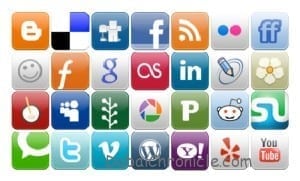
Best Social Media Sharing Practices
In just a few years, social media platforms have quickly transformed into some of the most effective and affordable marketing tools for companies. Because of that, small businesses are among the biggest adapters of this type of marketing. However, sharing and promoting content on social media sites is not that easy. Some practices are more productive than others. As a result, the web is flooded with social media sharing practices tips on how to engage more users and make them click on publications. However, these articles are based mainly on experience which tends to vary from one business to another. As a result, they are less reliable than statistics, for example. A study conducted by Compedium has examined many aspects of social media sharing practices to the smallest detail.
The research is called What Works for Social Sharing and it points out some of the best social media sharing practices. In addition, it mentions some less successful ones. What it should be noted here is that the research found that the results often differ depending on the type of social website, as well as the type of marketing – B2B or B2C (business-to-business or business-to-consumer).
Hashtags are often seen in companies’ social messages. That is because they allow an easy and lazy way to make your posts more visible. Surprisingly, however, the study found that they are effective only in B2B marketing. Consumers, on the other hand, are less influenced by them. In fact, social media messages with hashtags which target consumer receive less clicks that those which do not include a hashtag.
The length of the message itself is also important, according to the research. However, here the difference does not come from the targeted audience, but by the social media website. For instance, it is best if you keep messages very short on Twitter (not only because of the 140-character limit). Opposite is the case on LinkedIn where longer message enjoy a bit more attention.
Your punctuation also plays a role in the effectiveness of your social message. It is best if you avoid question marks. Messages which include question marks receive about 30% less clicks in B2B marketing. The percentage is even higher when it comes to consumers – around 50%. Things are a bit better with exclamations marks. They are generally well-accepted by both businesses and consumers on nearly all social media websites. The big exception here is Twitter. The study points out that if you add an exclamation mark to your tweets, you will get more than 10% less engagement.
Bur if you want to be really successful on Twitter, fill up your messages with numbers! The research has found that unlike other social sites, Twitter users’ attention is easily attracted by numbers. That is especially the case with B2B marketing where click jump with 50% at the sight of a number.
Now that you hold the secret to successful social media messaging, you can go and test it out yourself.




































